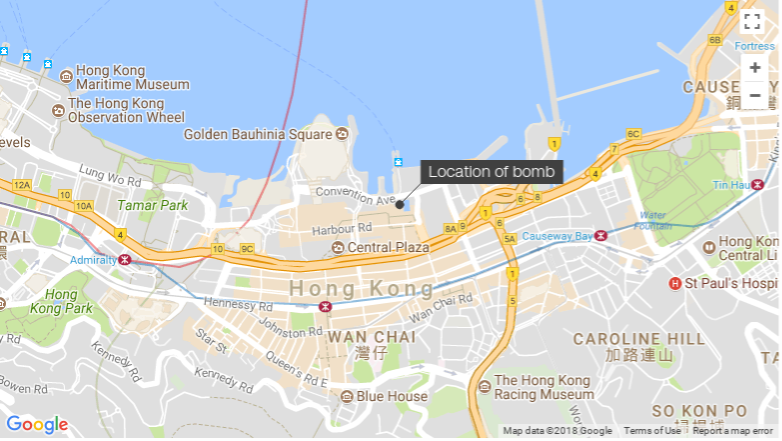An unearthed explosive in Hong Kong
February 26, 2018
At 11 a.m. on Wednesday, a World War II bomb was unearthed in a construction site near the Harbor-front Hong Kong Convention Center. The streets were cordoned off and 4,000 people were evacuated in the Wan Chai district of Hong Kong during this dangerous operation.
A nearby neighborhood housed nearly 1,500 people and was vacant during the time of the evacuation and diffusion of the bomb. Local shops had been shuddered, walkways were sealed off from the public, and ferry services across the Victoria Harbor were suspended for a time; as the very lethal AN-M65 bomb was being dismantled.
The 5 ft. long bomb weighed nearly 1,000 pounds, with 600 pounds being explosive material. This particular bomb was used by U.S. soldiers during World War II. The U.S. Army Air Corps began the bombing of Hong Kong began in the fall of 1942 and was carried out by B-24 and B-25 bombers, the former of which would carry up to 8,000 pounds of explosives. This particular bomb was designed as a free-fall explosive meant to destroy infrastructure during air raids.
The entire operation was a handled very delicately and took about 24 hours. Officer Alik McWhirter repoted that the bomb was, “already in dangerous condition; it’s lucky we found it when we did.” McWhirter told the South China Morning Press that the bomb’s fuse mechanism was found to be severely damaged increasing the difficulty of the ever so strenuous task.
To make matters worse the position of the bomb in the muck and dirt of the construction site was making it difficult to gain optimum access for the necessary equipment. According to McWhirter, “bomb disposal procedures are dirty, difficult, and dangerous, in this particular case, all three were true. With the rain, the tricky location, and a fuse mechanism, the team couldn’t even see.”
According to senior bomb disposal officer Tony Chow Shek-kin, the front detonator of the bomb was broken, and moving the bomb posed too much of a threat, so dismantling the bomb at the scene was the only option. Shek-kin stated, “it could cause extensive damage. If the bomb explodes the force could affect the surrounding area within 200 meters, with fragments flying as far as 2,000 meters.”
On Thursday, Explosive Ordnance Disposal officers were able to cut a large hole in the bomb shell and burn off the explosive material inside. From there the shell was carried out by a crane and moved out of the proximity of the city.
According to Hong Kong historian Jason Wordie, the area where the bomb was discovered used to be the harbor, before the water line was pushed farther away by land reclamation.
Hong Kong’s strategic use during World War II, for its ship repairing facilities, made the city very valuable during its Japanese occupation. However this only created a target on Hong Kong for the Allied Forces. Wordie stated that there will likely be “stacks more” of bombs similar to this one waiting to be found. Just last Sept., nearly 60,000 people were evacuated as authorities defused a 1.4 ton British bomb in Frankfurt, Germany. So far, the heaviest bomb to be found in the Hong Kong area was a 2,000 pound wartime explosive that was found near the Happy Valley Racecourse in 2014.
